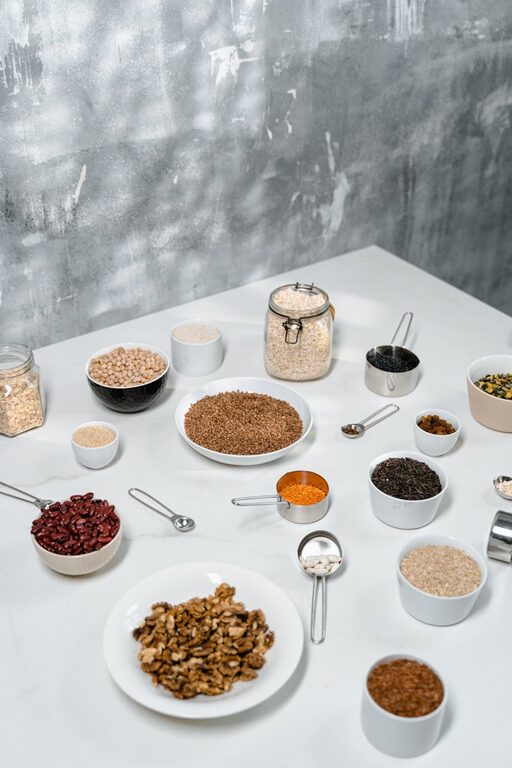Planning meals from pantry staples is a smart and efficient way to keep your kitchen stocked with ingredients that can be turned into delicious dishes anytime. Whether you have a busy schedule, want to save money, or prefer minimal trips to the grocery store, learning how to make the most of what’s already on hand is a valuable skill.
In this post, we’ll guide you through the process of organizing your pantry, selecting core staples, and creating meal ideas that are both satisfying and easy to prepare.
Why Plan Meals Around Pantry Staples?
Pantry staples are non-perishable or long-lasting ingredients that you keep in your kitchen regularly. Examples include dried pasta, canned beans, rice, spices, and cooking oils. Planning meals around these ingredients helps you:
– Reduce last-minute grocery runs
– Save money by using what you already have
– Minimize food waste
– Create quick meals without stress
Step 1: Take Stock of Your Pantry
Before you can plan meals, get to know what’s in your pantry.
– Inventory your ingredients: Write down all the staples you have, such as grains, canned goods, spices, and baking essentials.
– Check expiration dates: Remove anything expired or stale.
– Organize your pantry: Group similar items together to easily see what you’ve got.
Having this clear overview makes it easier to build meals around what you already own.
Step 2: Build a List of Core Staples to Keep on Hand
If you’re starting from scratch or want to restock, here are common pantry staples you might consider:
Grains and Pasta
– Rice (white, brown, or jasmine)
– Dried pasta (spaghetti, penne, shells)
– Quinoa or couscous
– Rolled oats
Canned and Jarred Goods
– Beans (black, kidney, garbanzo)
– Tomatoes (diced, crushed, tomato sauce)
– Tuna or salmon
– Coconut milk
– Broth or stock
Baking and Cooking Essentials
– Flour (all-purpose, whole wheat)
– Sugar (white, brown)
– Baking powder and baking soda
– Cooking oils (olive oil, vegetable oil)
– Vinegars (balsamic, apple cider)
Spices and Seasonings
– Salt and pepper
– Garlic and onion powder
– Chili flakes
– Dried herbs (oregano, thyme, basil)
– Curry powder or cumin
Step 3: Plan Balanced Meals Using Pantry Staples
When planning meals, try to create dishes that include protein, carbohydrates, and vegetables. Here’s how to combine your staples:
Use Beans and Canned Fish as Protein
Canned beans and fish are versatile proteins that work well in many recipes, from soups and salads to pasta dishes.
Add Grains or Pasta for Carbohydrates
Rice, quinoa, or pasta provide the base for your meals and help keep you full.
Incorporate Fresh or Frozen Vegetables
While pantry staples form the foundation, adding fresh or frozen vegetables adds flavor and nutrients.
Step 4: Meal Ideas Using Pantry Staples
Here are some simple recipe ideas you can try using common pantry items:
1. One-Pot Tomato and Pasta
Combine canned tomatoes, dried pasta, olive oil, garlic powder, and dried herbs in a pot. Simmer until the pasta is cooked and the sauce thickens.
2. Chickpea Curry
Use canned chickpeas, coconut milk, curry powder, and canned tomatoes. Simmer with onion and garlic powder, then serve over rice.
3. Tuna Salad with Beans
Mix canned tuna with drained beans, olive oil, vinegar, salt, and pepper. Add any fresh veggies you have on hand.
4. Rice and Bean Bowls
Cook rice and top with seasoned canned beans, salsa, and a sprinkle of spices.
5. Oatmeal for Breakfast
Use rolled oats, milk or water, and your favorite spices like cinnamon. Add nuts or dried fruit for extra flavor.
Step 5: Tips for Successful Meal Planning from Your Pantry
– Be flexible: Use what you have, but don’t be afraid to substitute.
– Combine leftovers: Incorporate leftover vegetables or proteins into recipes.
– Prep in advance: Cook grains or beans ahead of time to save cooking time during the week.
– Keep a list: Maintain an updated list of what’s in your pantry to avoid buying duplicates.
– Experiment: Try new spice combinations or add fresh herbs when possible.
Conclusion
Planning meals from pantry staples is a practical way to simplify cooking, reduce waste, and enjoy balanced, home-cooked meals. With a well-organized pantry and a shopping list focused on essentials, you’ll always be ready to whip up something delicious.
Start by taking stock of your current items, build a solid base of ingredients, and get creative with your meal ideas. You’ll be surprised how many tasty dishes you can make with just a few staple items!
Happy cooking!


